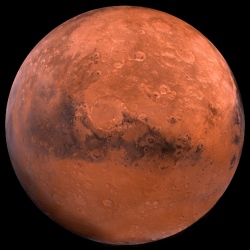
When the first living visitor from Earth lands on Mars we might well expect it to be a man or a woman, but if students from the University of Southampton Spaceflight Society have their way, it could be one small step for a lettuce. That may seem more than a bit mad, but its part of an experiment to see if crops can grow in the Martian environment as a prelude to colonization.
If Mars is ever going to be colonized, the pioneers are going to have to learn to live off the land. Shipping food, water, air, spare parts, and the other necessities of life would be insanely expensive, and a completely self-contained habitat, even if feasible, misses the point of colonization and might as well be built in the Gobi Desert or Antarctica. A truly success colony will need, for example, to use the Martian air and the Martian sunlight to grow crops.
Developed by a team of under and postgraduate students as part of an international competition sponsored by the Mars One group, the Southampton #LettuceOnMars experiment consists of a small greenhouse that will be able to grow lettuces using the atmosphere and sunlight on Mars.
The goal is to demonstrate that it is feasible to grow crops on Mars with an open-ended technology that uses Martian resources rather than the closed systems used in gardening experiments on the International Space Station or relying on materials sent from Earth.
